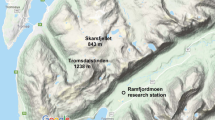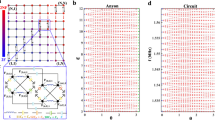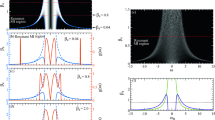Abstract
WE have recently made some measurements of the voltage distribution along the slow-wave circuit of our ‘travelling-wave-tube analogue’, operated as a backward-wave oscillator, which are of interest in helping to decide between the various theoretical models which have been proposed to describe backward-wave oscillator operation.
This is a preview of subscription content, access via your institution
Access options
Subscribe to this journal
Receive 51 print issues and online access
$199.00 per year
only $3.90 per issue
Buy this article
- Purchase on Springer Link
- Instant access to full article PDF
Prices may be subject to local taxes which are calculated during checkout
Similar content being viewed by others
References
Sims, G. D., and Stephenson, I. M., Electronic Tech., 37, 20 (1960).
Matthews, A. R., Stanford University Tech. Rep. 102 (Feb. 1956).
Rowe, J. E., “Electronic Waveguides”, 315 (Polytechnic Press, Brooklyn, 1958).
Gould, R. W., Trans. I.R.E., ED-5, 98 (1958).
Author information
Authors and Affiliations
Rights and permissions
About this article
Cite this article
WONG, M., SIMS, G. & STEPHENSON, I. Operation of the Backward-Wave Oscillator. Nature 188, 803–804 (1960). https://doi.org/10.1038/188803b0
Issue Date:
DOI: https://doi.org/10.1038/188803b0
Comments
By submitting a comment you agree to abide by our Terms and Community Guidelines. If you find something abusive or that does not comply with our terms or guidelines please flag it as inappropriate.



